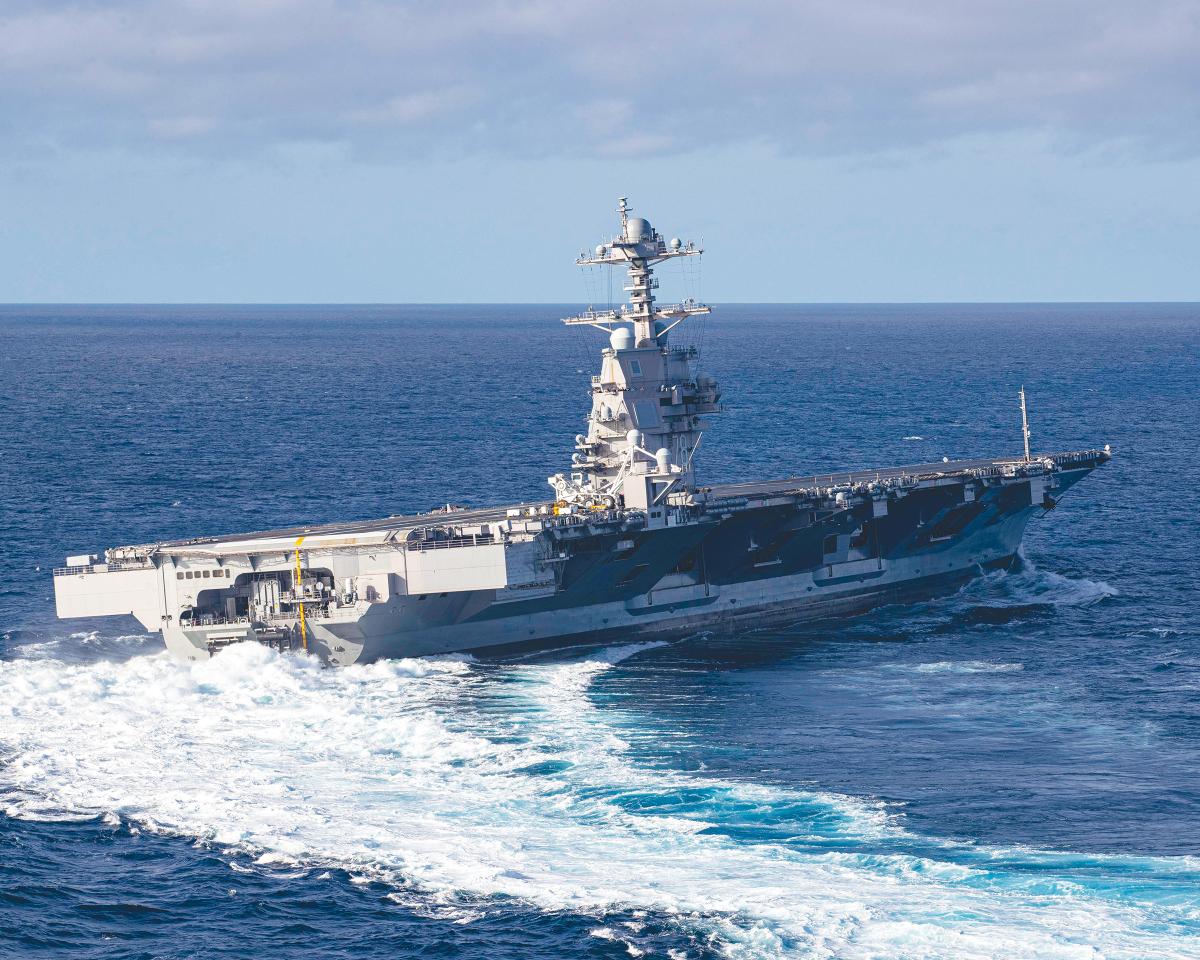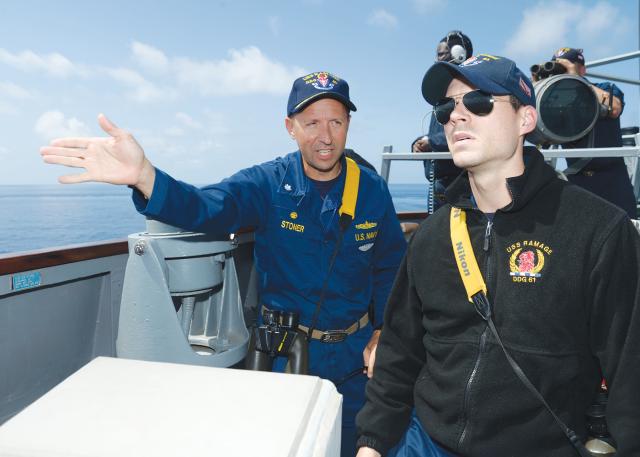Navy culture—especially within the officer ranks—punishes mistakes and rewards success. While the service has recognized the more than two-decades-old problem of zero-defect mentality—developed during the reduction-in-force period of the 1990s—most of us have yet to see the reemergence of the command master chief who remembers his own alcohol-related incidents while he counsels junior sailors. Moreover, we rarely witness a junior officer who makes serious mistakes and rises above them become a commanding officer. While the words “zero-defect mentality” are verboten in a discussion of naval culture, the reality is that a single bad tour still can put a junior officer on a dead-end career track.
The Navy’s zero-defect approach does little to develop leaders within the ranks, but instead serves to identify the lucky ones who go for years without making a mistake (or being caught). Good officers often have careers cut short for a single lapse in judgment that is the result of inexperience, not lack of intelligence or maturity. The only way to fix lack of experience is to grant experiences, not to replace the officer with yet another inexperienced officer. Navy culture’s reticence to accept mistakes hides an important but vital truth: We learn best from observing the outcomes of choices we make ourselves.
Create Opportunities to Fail
I learned the importance of failure firsthand late in 2008 while serving as the conning officer on board the USS Abraham Lincoln (CVN-72). We were participating in our Composite Training Unit Exercise (COMPTUEX) in preparation for our upcoming Arabian Gulf deployment. During flight operations, my primary duty was to align the ship so the winds across the deck were optimized for recovering aircraft. Given the short length of the landing area on a carrier, a headwind is required to enable aircraft to land, and crosswinds can make landings unsafe. By altering the ship’s course and speed, I would “dial-in” the winds across the deck to make the landings as safe as possible for the pilots.
Unfortunately, the coastal environment we were in was crowded, and we did not have much room to maneuver. Once I calculated the course and speed required to land aircraft, I would consult the chart and often notice that I had limited space to optimally position the ship. Frequently, I would be able to land aircraft for no longer than 20 minutes before I would need to reset, moving back to the start of my track. This required turning 180 degrees, transiting as quickly as possible to the other end of the track, then performing another 180-degree turn to reestablish adequate winds. During these resets, no aircraft could launch or recover, and the unit was effectively out of the fight. Performing the reset as quickly as possible was paramount.
The most time-consuming part of the reset was not the transit itself, but turning the ship. Rapidly turning, especially at speed, causes the ship to heel outward, sometimes to a dangerous degree. While sailors are operating on the deck and aircraft are untethered and moving into position, there is a maximum amount of heel that can be safely tolerated. Thus, the conning officer must balance the speed at which he brings the winds into position for the pilots with the safety of the sailors on the ship.
One particular day, I was conning the ship under the watchful eye of the commanding officer, then-Captain Patrick Hall, while launching and recovering aircraft performing missions to earn certification to deploy. The captain had provided a checklist for how to perform a reset turn as quickly as possible, complete with which commands to issue and how many seconds between commands. Using the checklist, the conning officer had no decisions to make, but merely had to follow the captain’s orders. The officer of the deck—who had immediate responsibility for training me as conning officer—was not happy with the instructions provided by the captain, and I observed him tell the captain that he felt he could perform a reset turn more quickly by applying maximum rudder, then easing off the rudder as the ship began to approach its safe heel limits.
Another captain might have pulled rank and informed the officer of the deck that, as the commanding officer, he expected his orders to be obeyed. Captain Hall, however, was unlike other commanding officers I had served under, and he did not do this. Instead, he handed me a stopwatch and informed me I would be making the next turn using his directions, and I was to time it. I completed the turn, and he wrote the time required to make the turn onto the windshield with a grease pencil. He then announced to the bridge that the officer of the deck had the conn and instructed him to make the next turn using his alternate technique.
It was a trap, and we all knew it. The officer of the deck begged and pleaded, arguing that our primary concern should be supporting the wing, and if the commanding officer was confident that his technique was better, we should use it. Captain Hall did not budge. Our officer of the deck put the rudder hard over, and the ship heeled hard. The captain reached up for his intercom and calmly informed the air bridge that we would be late recovering aircraft, and they should inform the pilots to take a lap before entering approach. The air boss responded with a stream of invectives about the importance of this exercise and the obvious incompetence of the ship’s bridge in not getting us in position quickly enough.
Meanwhile, the officer of the deck repeatedly pulled the rudder back to try to keep the heel under control, and the ship was turning much slower than it had under the captain’s directions. By the time we had our new heading, it had taken well over a minute longer than the turn using the captain’s method. Captain Hall’s point was made. His technique was better than simply throwing the rudder hard and trying to rush the turn.
After completing flight operations, I asked the captain about the incident. We all knew the importance of passing the COMPTUEX evaluation, and I was surprised he would risk failing the exercise just to embarrass a junior officer. He calmly explained embarrassment was never his intention. “If I just ordered him to use my method, he would do it, but he’d always believe that his way was better. Now he knows my method is better, and he’ll never forget it.” Captain Hall knew the officer of the deck had to fail to truly learn, and so he allowed the officer to put himself in a position to fail. Captain Hall encouraged him to fail.
I do not know if Captain Hall realized it at the time, but I learned a lesson that day as well, and not a lesson about how to turn a ship around quickly. I learned that a mistake does not mean that a leader is ineffective or weak, but rather that the leader has been granted an opportunity to learn something new.
Fail to Learn
Months later, I was serving as a safety officer when a breakdown in communication caused almost $100,000 of damage to one of the ship’s weapon systems. Captain Hall did not berate me or reduce my duties, nor did he tell me what I should have done differently. He calmly asked me to let him know how I would prevent a similar incident in the future. This drove me to truly learn from my experience, thus making me a better officer.
There are, of course, some mistakes so serious as to question the underlying character or intelligence of the person responsible. This is not intended to invite forgiveness for serious fraternization charges or support retaining an officer incapable of learning procedures after extensive training. Some things we need to learn before we gain responsibility, and failure to do so can indicate a person’s unsuitability for leadership positions.
There is no need to wait for mistakes to happen on their own. It is far better to have mistakes happen in controlled environments, when and where we are prepared to accept them. As leaders, we can encourage failure by putting our sailors in positions where they are likely to fail. A military service spends the majority of its time training and preparing for combat operations in which mistakes can be deadly. If by occasionally failing exercises we make fewer mistakes when the stakes are high, then we become a stronger force. The recipe for encouraged failure requires that Navy leaders maximize delegation, accepting some risk to mission as they do.
Shed Zero-Defect Mentality
There are three essential elements to encouraging failure. The first is to maximize the delegation of authority while managing the risk that comes with it. The second is to avoid micromanagement and allow subordinates to try things their way. The third piece is to respond appropriately, creating learning opportunities instead of punishments. With all three pieces in place, subordinates will learn from mistakes and become stronger, more experienced leaders.
Accepting risk in delegation requires that leaders be comfortable with mistakes being made under their watch, knowing that, in the long-term, the Navy will be stronger for it. We do not have to pass every evaluation or ace every exercise if failing means we are more effective later in combat.
The second element of encouraging failure is to avoid micromanagement. Nothing is learned from repeating a procedure you do not concur with. Allow subordinates to try new ideas, even if you do not agree with them, and watch with them to see how they work. Attempting to prevent mistakes by telling a subordinate exactly what to do stunts their growth, exchanging the long-term success of the unit for a temporary win.
For the majority of errors, the role of leaders should not be to punish, but to encourage the individual to learn. Use creativity to build a memory that will not be forgotten, not just by the officer in question, but those who witness it. Every person on that bridge in 2008—not just the officer of the deck—learned that a ship would complete a reset turn faster if less rudder were applied at the beginning of the turn. Use failures as opportunities to train the entire wardroom when possible.
None of this needs to be applied solely to officers, either. As a division officer, you may not have the ability to let your peers learn from their mistakes, but you certainly can mentor and lead a chief and a number of petty officers. When a junior sailor makes a mistake, the standard division officer response is to tell the chief, “Give him a counseling.” Instead, we should be discussing with the chief what we want the sailor to take away from the counseling, and how we are going to ensure that message is truly absorbed. Let mistakes be the college courses that propel junior officers and sailors into capable leaders in the future.
Captain Hall went on to be promoted to rear admiral and has since retired from the Navy. But his leadership lessons must be remembered and emulated. To build the most effective combat leaders, our Navy must shed the zero-defect mentality in favor of a culture that encourages and learns from failure.





